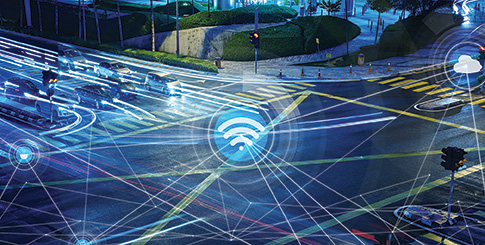The constant speed maintained by the platooning trucks provides better mileage and may even reduce carbon dioxide emissions as well. “Platooning is probably a couple years away,” comments Cammisa. “Companies are still doing research, and in some states, the following distance laws must be changed.”
Roeth agrees and notes two trucks in a platoon versus two trucks a mile apart saves an average of 7 percent in fuel tests and a projected 4 percent in real-world fuel use. He believes this technology will become a reality in either 2018 or 2019 and U.S. Department of Transportation testing continues.
FRESH FORUM
What do you think of autonomous trucks? think of autonomous trucks?Norita Taylor, Owner Operator Independent Drivers Association
We have many questions about whether such a system of moving goods would require all vehicles to be autonomous to work effectively and safely. We also wonder about the ethical implications, such as whether computers should be allowed to make life and death decisions instead of humans. We have yet to hear anything proposed that would greatly benefit a particular business model in trucking.Mary C. Aufdemberg, Freightliner Trucks
As with passenger cars, innovations in trucking in terms of autonomous vehicles center on improving safety, fuel efficiency, and driver experience. Several building blocks needed for autonomous driving and platooning are already found on commercial vehicles today.Regarding safety, examples include antilock brakes, electronic stability control, lane departure warning with cameras, and active brake assist with radar. Regarding fuel efficiency, electronic controls of the engine and transmission have advanced to anticipate road terrain such as hills and curves to optimize vehicle speed and power.
Ellen Voie, Women in Trucking Association, Inc.
Those outside the trucking industry envision, in the large truck next to them, a dirty, smoke-spewing diesel engine with a tired driver shifting gears. The industry’s adoption of technology including driver-assist technology, collision-mitigation devices, connectivity platforms, fuel efficient powertrains, and environmentally friendly emissions are now common. Many of these technologies are the building blocks of autonomous and platoon-capable trucks. Our goal is to get the public’s image to catch up to the technology.
“The engineering isn’t that difficult for platooning,” Roeth contends, “the problem is convincing insurance companies and other motorists it’s safer.” And therein lies the rub: despite studies and tests, many doubt the veracity of such claims and insurers are equally skeptical.
For some, thoughts of ‘robot’ trucks on the highway is the stuff of nightmares. According to a 2017 survey conducted by the American Automobile Association, three-quarters of those polled were afraid to ride in a self-driving car. More than half the respondents, 54 percent, said they felt less safe sharing the road with a completely autonomous vehicle.



